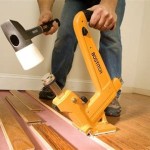Labor Cost To Install Vinyl Plank Flooring Per Square Foot: A Comprehensive Guide
Vinyl plank flooring has gained significant popularity as a durable, aesthetically versatile, and relatively affordable flooring option for residential and commercial spaces. While the material costs are generally understood, the labor expenses associated with installation can vary considerably. Understanding the factors that influence the labor cost per square foot is crucial for accurate budgeting and project planning.
This article offers a detailed examination of the labor costs involved in installing vinyl plank flooring, exploring the diverse factors that impact these expenses and providing insights into how to estimate the total cost of installation effectively. We will delve into the specifics of labor costs, preparation requirements, and other crucial considerations that play a significant role in the final project budget.
Key Point 1: Core Influences on Labor Costs
Several primary factors influence the labor cost per square foot when installing vinyl plank flooring. These factors encompass the complexity of the installation, the geographical location, the experience of the installer, and the existing condition of the subfloor.
The intricacy of the installation is a major determinant. Installations involving intricate patterns, multiple rooms, or areas with irregular shapes and numerous corners inherently require more time and skill. This increased complexity directly translates to higher labor costs. Cutting planks to fit around obstacles like pipes, door frames, and other architectural features adds to the time required, thereby influencing the price.
Geographical location also plays a significant role. Labor costs tend to be higher in metropolitan areas and regions with a higher cost of living. This is because installers in these areas typically have higher overhead expenses, insurance costs, and local taxes, all of which contribute to higher overall labor rates. Market demand can also affect this factor as area with high demand for installer raise the price.
The installer's experience and expertise directly impact the labor costs. Seasoned professionals with extensive experience often charge higher rates due to their efficiency, precision, and ability to handle complex installation challenges effectively. While hiring an experienced installer typically involves greater upfront costs, it can prevent costly mistakes and ensure a higher quality, longer-lasting installation, ultimately saving money in the long run.
The condition of the subfloor also plays a crucial role. Subfloors that are uneven, damaged, or require significant preparation will necessitate additional labor hours for leveling, patching, and cleaning. If the existing subfloor is severely damaged, replacement might be necessary, which can significantly increase both material and labor expenses.
Key Point 2: Understanding the Breakdown of Labor Activities
The labor involved in installing vinyl plank flooring encompasses a range of activities, each contributing to the overall cost. Understanding these activities and their associated time requirements provides a clearer picture of the total labor expenditure.
Preparation of the subfloor is a critical step. This involves removing existing flooring materials such as carpet, tile, or old vinyl. The subfloor must be thoroughly cleaned, removing any debris, dust, and adhesive residue. Inspecting the subfloor for imperfections, such as cracks, holes, or unevenness, is equally vital. Addressing these issues by leveling the subfloor with self-leveling compound or patching damaged areas ensures a smooth and stable surface for the new vinyl planks.
Acclimation is another essential element. Vinyl planks must acclimate to the room's temperature and humidity for a specified period, typically 48-72 hours, before installation begins. This process allows the planks to expand or contract, preventing issues such as buckling or gapping after installation. The installer also need to move the boxes of planks material to installation area. This is usually done on the first day, before installation.
Cutting and fitting the planks is a time-consuming process. Precise measurements are crucial to ensure proper alignment and minimize waste. Cutting planks to fit along walls, door frames, and other obstacles requires skill and attention to detail. Intricate patterns or designs will further increase the time required for this phase.
The actual installation process involves adhering the planks to the subfloor, either through a click-lock system or with adhesive. Ensuring that each plank is aligned correctly and securely fastened is essential for a professional-looking and durable installation. Using specialized tools, such as tapping blocks and pull bars, aids in achieving tight seams and a level surface.
Finishing touches, such as installing baseboards, quarter-round molding, or transition strips, complete the installation. These elements provide a polished appearance and conceal any gaps between the flooring and walls or other flooring surfaces. Cleaning the installation area and removing debris is the final step, ensuring a clean and presentable finished product.
Key Point 3: Estimating Labor Costs Effectively
Accurately estimating labor costs for vinyl plank flooring installation is crucial for budgeting purposes. Soliciting multiple quotes from different installers, factoring in potential unforeseen expenses, and understanding the scope of work are all essential for a realistic labor estimation.
Obtaining multiple quotes from different installers is a fundamental step. This allows for comparison of pricing, experience, and services offered. Verify that each quote includes a detailed breakdown of the services provided, including preparation, installation, and finishing. Be wary of quotes that seem significantly lower than others, as this may indicate inexperienced installers or hidden costs.
Factoring in potential unforeseen expenses is essential. Unexpected issues, such as the discovery of asbestos in the existing flooring or significant subfloor damage, can lead to additional costs. Setting aside a contingency fund to cover these potential expenses helps prevent budget overruns. It is also wise to have installers outline potential add-on expenses based on their discovery during initial assessment, but these costs need not be paid unless they become necessary.
Understanding the scope of work is also necessary. A clear understanding of the project’s requirements, including the total square footage, the complexity of the layout, and any specific design features, helps ensure an accurate labor estimation. Providing installers with detailed information and specifications allows them to provide more precise quotes.
Checking the installer's qualifications and insurance coverage is a way you can save money on labor cost. Using unlicensed or uninsured contractors may offer lower initial cost, but it comes with many risks such as substandard work, lack of recourse in case of damages, and potential legal liabilities should accidents occur. Ensure the installer is properly licensed and insured to protect your investment and mitigate potential risks.
Negotiating the price and considering off-season discounts can potentially reduce labor costs. Inquiring about potential discounts for off-season installations or negotiating the price based on the scope of work can lead to cost savings. Be prepared to negotiate reasonably and understand the installer's perspective, balancing the need for cost-effectiveness with the importance of quality workmanship.
Preparing the space for installation can slightly reduce the labor cost. If you are removing the old flooring, cleaning the subfloor, and moving furniture, it reduces the amount of labor installer need to do. However, if you're not experienced in this kind of work, let the installer do all the preparations.
In summary, accurately estimating the labor cost for vinyl plank flooring installation requires careful consideration of various factors, including the complexity of the installation, geographical location, installer experience, subfloor condition, and the scope of the work. By obtaining multiple quotes, understanding the breakdown of labor activities, and factoring in potential unforeseen expenses, property owners can budget effectively and ensure a successful flooring project.

Fixr Com Cost To Install Vinyl Flooring

Fixr Com Cost To Install Vinyl Plank Flooring S

Fixr Com Cost To Install Vinyl Flooring

Fixr Com Cost To Install Vinyl Flooring

Lowe S Vinyl Plank Flooring Installation Cost 2024

Fixr Com Cost To Install Vinyl Flooring

How Much Does It Cost To Install Vinyl Plank Flooring

Average Cost Of Vinyl Flooring Installation In 2024 Forbes Home

Cost To Install Vinyl Plank Flooring A Complete Guide 2024 Forbes Home

How Much Does Charge To Install Vinyl Plank Flooring Upgradedhome Com
Related Posts








